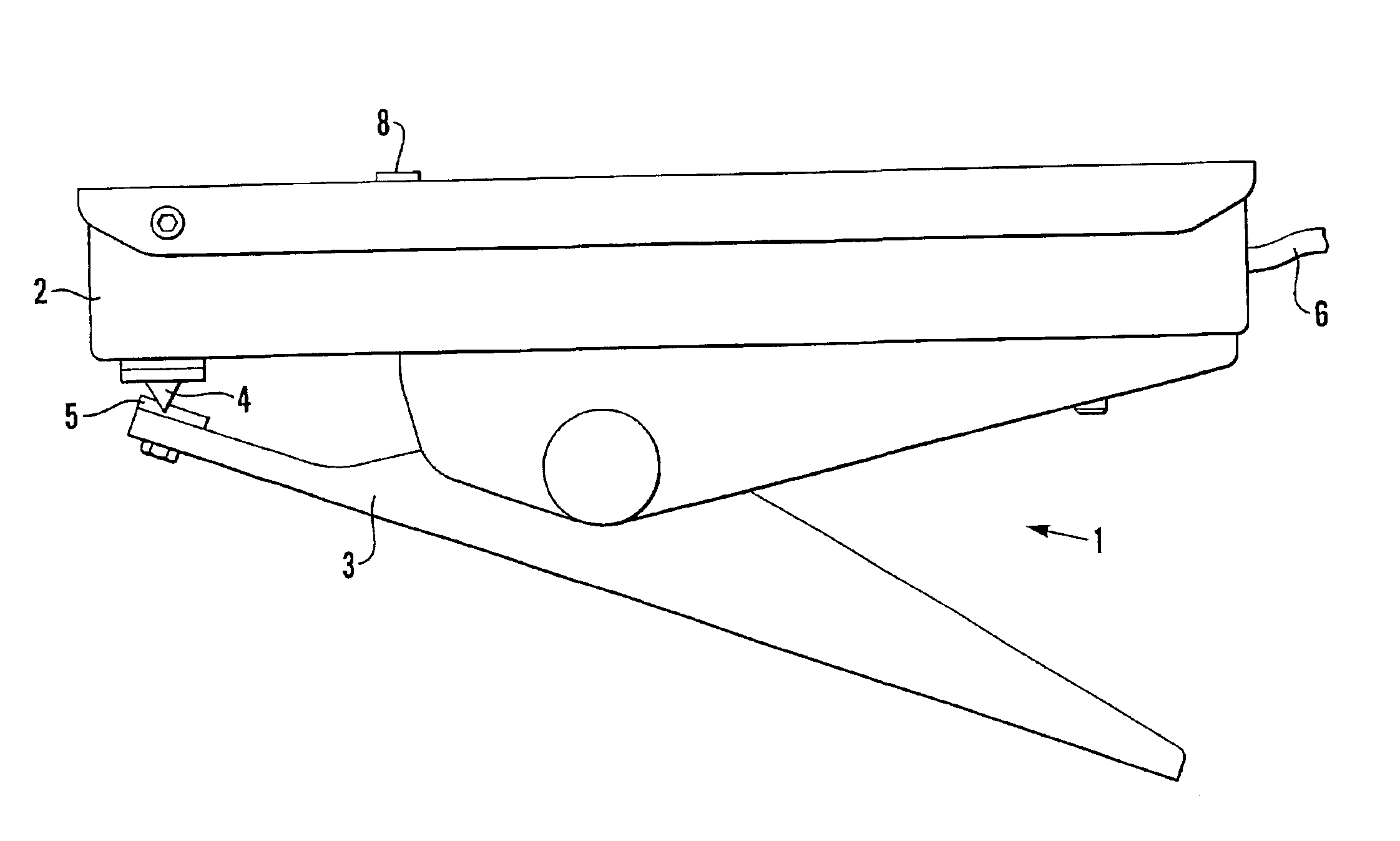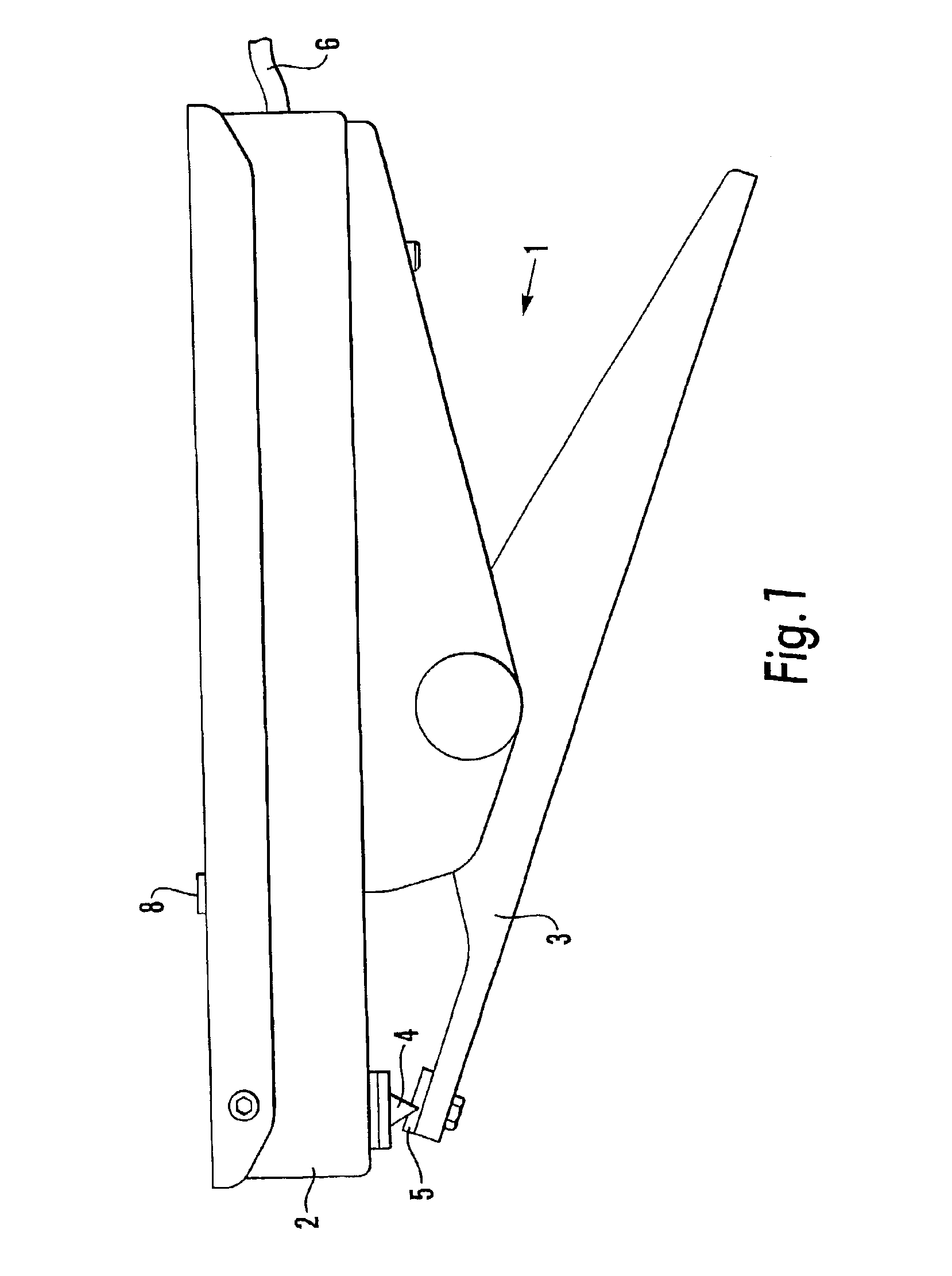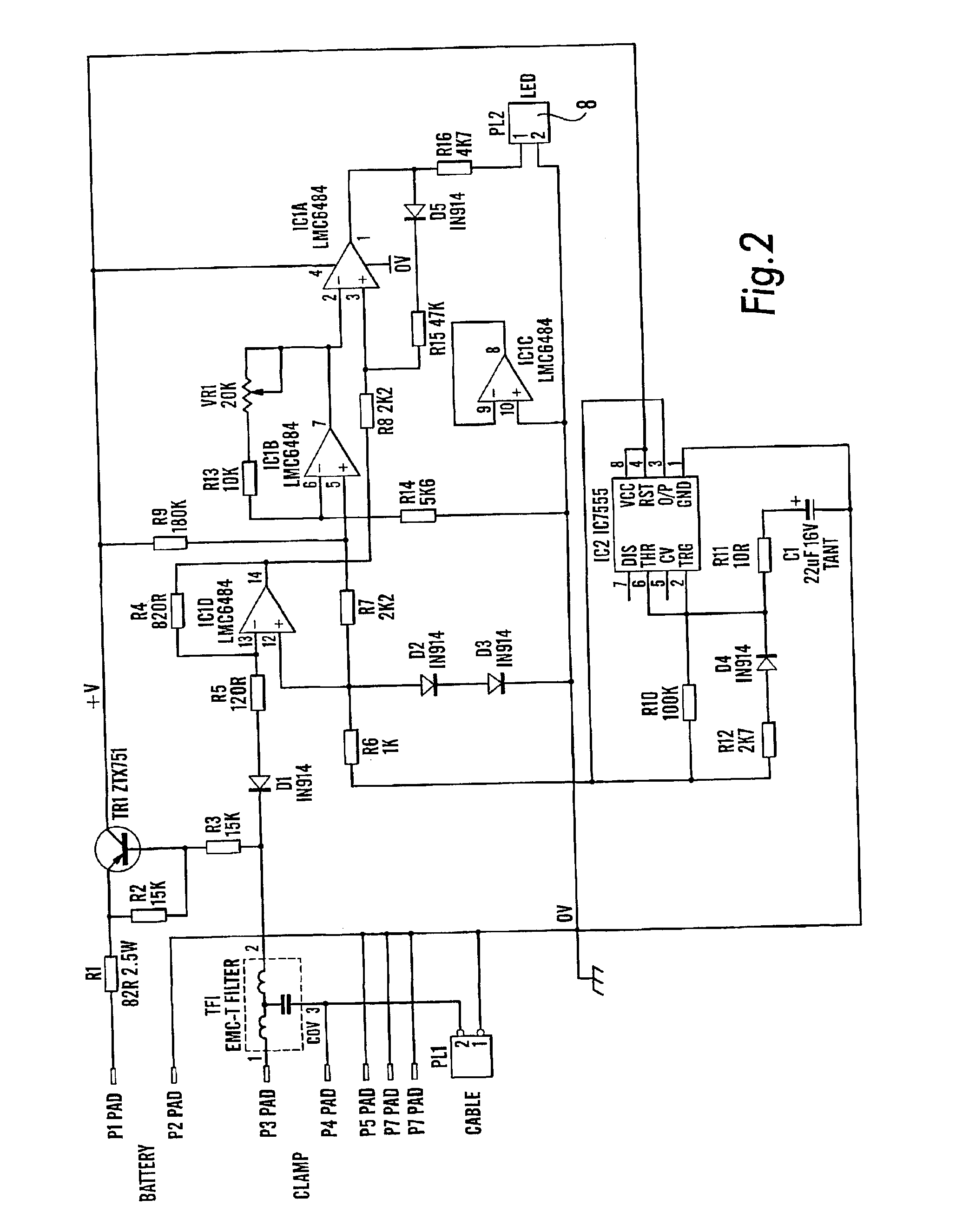Electrical resistance monitoring device
a monitoring device and resistance technology, applied in the direction of measurement devices, burglar alarms by opening, instruments, etc., can solve the problems of affecting the safety of people, the possibility of legal action, and the attendant bad publicity, so as to simplify the installation of the device, the effect of convenient and convenient us
- Summary
- Abstract
- Description
- Claims
- Application Information
AI Technical Summary
Benefits of technology
Problems solved by technology
Method used
Image
Examples
Embodiment Construction
[0030]Referring first to FIG. 1, a first embodiment of the invention comprises a grounding clamp that is generally designated 1. The clamp 1 comprises, in conventional fashion, a pair of spring-loaded jaws 2,3, the tips of which are fitted with juxtaposed mechanical point contacts 4,5 (described more fully below). A two-core earth cable 6 is connected to the clamp 1. The cable 6 may be in the form of flexible spiral cable or may be wound on a spring-loaded self-retracting cable drum.
[0031]The resistance monitoring circuit (described below) is incorporated into the upper jaw 2 of the clamp 1. A light-emitting diode (LED) 8 is mounted in the top surface of the upper jaw 2.
[0032]The arrangement of the point contacts 4,5 is shown more clearly in FIG. 3. As can be seen, there are a pair of contacts 4a,4b side-by-side on the underside of the upper jaw 2, juxtaposed with a single, central contact 5 on the lower jaw 3. The lower contact 5 is of electrically insulating material and is of elo...
PUM
 Login to View More
Login to View More Abstract
Description
Claims
Application Information
 Login to View More
Login to View More - R&D
- Intellectual Property
- Life Sciences
- Materials
- Tech Scout
- Unparalleled Data Quality
- Higher Quality Content
- 60% Fewer Hallucinations
Browse by: Latest US Patents, China's latest patents, Technical Efficacy Thesaurus, Application Domain, Technology Topic, Popular Technical Reports.
© 2025 PatSnap. All rights reserved.Legal|Privacy policy|Modern Slavery Act Transparency Statement|Sitemap|About US| Contact US: help@patsnap.com



